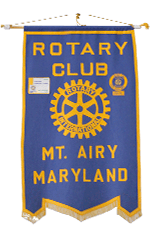The History of Oktoberfest And What it is Today
Posted on September 15, 2015

Oktoberfest has been around for over 200 years! Over time, it has evolved in many ways from the first event in 1810. The entire focus of the festival has shifted during these last few centuries. Read on if you are curious to know how it all began!
The First Oktoberfest
The first Oktoberfest commenced in Munich on October 12, 1810 in celebration of the royal wedding between Crown Prince Ludwig (later King Ludwig I) and Princess Therese of Saxony-Hildburghausen. The festivities were held on the fields outside of the city’s gates and lasted for 5 days. On the last day, horse races were held to conclude the event. While there was food, beer and wine, this first Oktoberfest is only vaguely similar to today’s Oktoberfest. Today, this festival is synonymous with “beer fest,” but back in 1811 it was the horse races that compelled the government to make it an annual event.
How Oktoberfest Evolved
A festival needs entertainment. The horse races covered only one day of the event, so other attractions got added over time. In 1811, Oktoberfest got its own agricultural show that runs to this day. Other attractions included bowling, swings, parades, tree climbing and carnival rides that gained popularity around the 1820s. Small beer stands slowly grew and by the late 1800s turned into beer tents selling beer from the famous breweries. Interestingly, horse races that got the whole Oktoberfest phenomenon started were eventually phased out from the festival.
While the first Oktoberfest took place in October, the dates were eventually moved back to enjoy longer and warmer September days. A modern Oktoberfest (or Die Wies’n as locals call it) is typically a 16-day event that runs from late September to the first weekend in October.
Oktoberfest Today
From what originally was a celebration for the citizens of Munich, the Oktoberfest has grown to host entire Bavaria and later turned into an international event. It is still held on the same spot as back in 1810, but it’s no longer a field and is closer to the center of Munich rather than outskirts.
And because Germany in general and Bavaria specifically are famous for their world-renowned breweries, by late 1800s beer became a big part of the Oktoberfest celebration. In fact, over 1 million gallons of beer are consumed annually at Oktoberfest. Many Oktoberfest traditions also have to do with beer. For example, each festival starts with the tapping of the first keg by the Mayor of Munich.
Beers served in the tents at Oktoberfest always come from the six Munich breweries: Löwenbräu, Paulaner, Hacker-Pschorr, Hofbräu, Augustiner and Spaten. These breweries prepare a special Oktoberfest brew that is slightly sweeter and higher in alcohol content than their regular beer. This causes some inexperienced attendees to miscalculate their drinking capacity and turn into what Germans kind-heartedly call “beer corpses” (Bierleichen).
Oktoberfest Around the World
Although it was originally a German festival, Oktoberfest soon exploded in popularity and got adopted in many different countries. And it’s not favored only by the Germans who live abroad or people with German roots—folks of all nationalities and ages are embracing the Oktoberfest tradition and the opportunity to immerse themselves into German culture for a few days. In the U.S., Oktoberfest events are held on many levels from private family parties to county-wide and state-wide festivals. At the Rotary Oktoberfest of Carroll County, our goal is to provide entertainment and enjoyment for your entire family. We hope to see you there!
Categories: General
« Back to Blog





